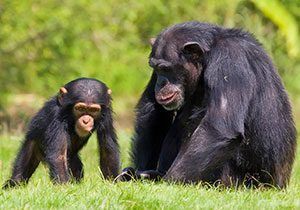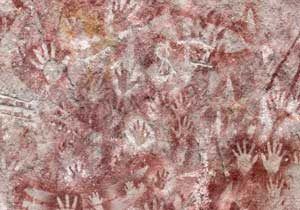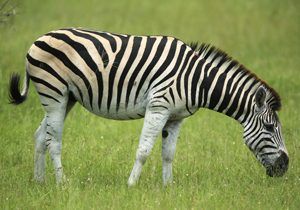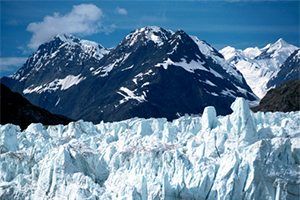
Make a bug hotel primary resource
Make a cosy garden home for our bug buddies!
This primary resource gives children an opportunity to make a bug hotel for their garden — a great way to encourage pupils to get creative and explore the world around them.
Pupils will be challenged to follow instructions to make an insect home from an empty plastic bottle, foam sheets, old tights, grass, leaves and sticks in our National Geographic Kids’ primary resource sheet. They will also learn about three species in the UK and Ireland whose numbers are in decline: the stag beetle, dormouse and hedgehog.
The teaching resource can be used as a printed handout for instruction in class time, or for display on the interactive whiteboard.
Activity: Ask pupils to bring in an empty plastic bottle to class and make their own bug hotel for their garden. Get them to check it each day, and identify and record the different insects they see for class discussion. Alternatively, divide the class into four or five groups and have each group make a bug hotel. The children could then place their insect homes at different places in the school grounds, and compare the different bugs they find inside each day.
N.B. The following information for mapping the resource documents to the school curriculum is specifically tailored to the English National Curriculum and Scottish Curriculum for Excellence. We are currently working to bring specifically tailored curriculum resource links for our other territories; including South Africa, Australia and New Zealand. If you have any queries about our upcoming curriculum resource links, please email: schools@ngkids.co.uk
This primary resource assists with covering the following Art and Design aims of the National Curriculum:
The national curriculum for art and design aims to ensure that all pupils:
- produce creative work, exploring their ideas and recording their experiences
- become proficient in drawing, painting, sculpture and other art, craft and design techniques
National Curriculum Key stage 1 objectives:
Pupils should be taught:
- to use a range of materials creatively to design and make products
- to develop a wide range of art and design techniques in using colour, pattern, texture, line, shape, form and space
This primary resource assists with covering the following Science aims of the National Curriculum.
- develop understanding of the nature, processes and methods of science through different types of science enquiries that help them to answer scientific questions about the world around them
This Science primary resource assists with teaching the following Key Stage 1 Science (Year 1) objectives from the National Curriculum:
Pupils should be taught to:
- identify and name a variety of common animals including fish, amphibians, reptiles, birds and mammals
- identify and name a variety of common animals that are carnivores, herbivores and omnivores
- describe and compare the structure of a variety of common animals (fish, amphibians, reptiles, birds and mammals, including pets)
National Curriculum Key Stage 1 Science (Year 2) objectives
Pupils should be taught to:
- identify that most living things live in habitats to which they are suited and describe how different habitats provide for the basic needs of different kinds of animals and plants, and how they depend on each other
- identify and name a variety of plants and animals in their habitats, including micro- habitats
- Pupils should be introduced to the terms ‘habitat’ (a natural environment or home of a variety of plants and animals) and ‘micro-habitat’ (a very small habitat, for example for woodlice under stones, logs or leaf litter).
- Pupils should compare animals in familiar habitats with animals found in less familiar habitats, for example, on the seashore, in woodland, in the ocean, in the rainforest.
National Curriculum Lower Key Stage 2 Science objectives (Years 3 & 4):
Pupils should be taught to use the following practical scientific methods, processes and skills:
- gathering, recording, classifying and presenting data in a variety of ways to help in answering questions
- recording findings using simple scientific language, drawings, labelled diagrams, keys, bar charts, and tables
Pupils should be taught to
- recognise that living things can be grouped in a variety of ways
- explore and use classification keys to help group, identify and name a variety of living things in their local and wider environment
- recognise that environments can change and that this can sometimes pose dangers to living things.
Pupils should use the local environment throughout the year to raise and answer questions that help them to identify and study plants and animals in their habitat. They should identify how the habitat changes throughout the year.
This primary resource assists with covering the following Expressive Arts Early level objectives from the Scottish Curriculum for Excellence:
- I have the freedom to discover and choose ways to create images and objects using a variety of materials.
Scottish Curriculum for Excellence First level Expressive Arts objectives:
- I have the opportunity to choose and explore a range of media and technologies to create images and objects, discovering their effects and suitability for specific tasks.
Scottish Curriculum for Excellence Third level Expressive Arts objectives:
- I have experimented with a range of media and technologies to create images and objects, using my understanding of their properties.
This Science primary resource assists with teaching the following Sciences Early level objectives from the Scottish Curriculum for Excellence:
- I have observed living things in the environment over time and am becoming aware of how they depend on each other
Scottish Curriculum for Excellence Sciences Second level objectives:
- I can identify and classify examples of living things, past and present, to help me appreciate their diversity. I can relate physical and behavioural characteristics to their survival or extinction.
- I can use my knowledge of the interactions and energy flow between plants and animals in ecosystems, food chains and webs. I have contributed to the design or conservation of a wildlife area.
Scottish Curriculum for Excellence Sciences Third level objectives:
- I can sample and identify living things from different habitats to compare their biodiversity and can suggest reasons for their distribution
Scottish Curriculum for Excellence Sciences Fourth level objectives:
- I understand how animal and plant species depend on each other and how living things are adapted for survival. I can predict the impact of population growth and natural hazards on biodiversity
Download primary resource
More Like

10 Chimpanzee Facts

Facts About Indigenous Aboriginal Art & Culture!

Scientists still stumped by zebra stripes









LEAVE A COMMENT
THANK YOU
Your comment will be checked and approved shortly.
WELL DONE,
YOUR COMMENT
HAS BEEN ADDED!
COMMENTS
CUSTOMIZE YOUR AVATAR